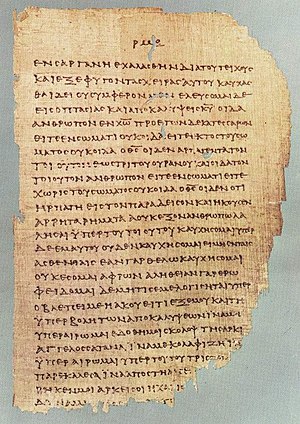
Back Textkritik des Neuen Testaments German Kritisisme Tekstual Perjanjian Baru ID Tekstkritiek van de Bijbel Dutch Tekstkritisk bibelforskning NB Текстология Нового Завета Russian Textkritisk bibelforskning Swedish
This article may need to be rewritten to comply with Wikipedia's quality standards. (April 2011) |

Textual criticism of the New Testament is the identification of textual variants, or different versions of the New Testament, whose goals include identification of transcription errors, analysis of versions, and attempts to reconstruct the original text. Its main focus is studying the textual variants in the New Testament.
The New Testament has been preserved in more than 5,800 Greek manuscripts, 10,000 Latin manuscripts and 9,300 manuscripts in various other ancient languages including Syriac, Slavic, Ethiopic and Armenian. There are approximately 300,000 textual variants among the manuscripts, most of them being the changes of word order and other comparative trivialities.[1][2]
- ^ Wallace, Daniel. "The Majority Text and the Original Text: Are They Identical?". Retrieved 23 November 2013.
- ^ Westcott and Hort (1896). The New Testament in The Original Greek: Introduction Appendix. Macmillan. p. 2. Retrieved 23 November 2013.
The New Testament in the Original Greek.